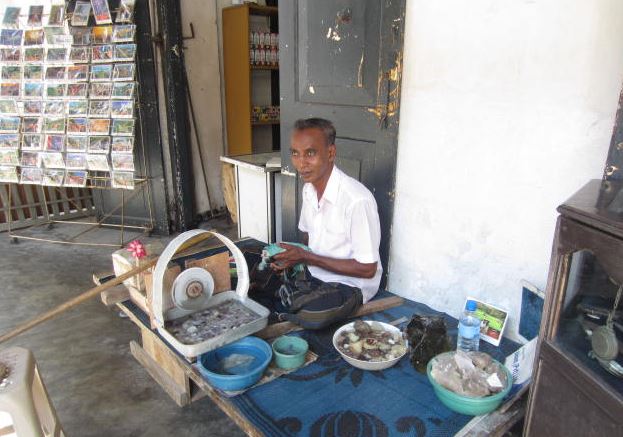
Sri Lanka is renowned for its gemstones, which are highly sought after for their quality and unique properties. However, the process of gem cutting is just as important as the quality of the raw gemstones themselves, as it determines the final shape, size, and overall appearance of the gemstone. Sri Lanka has a long history of gem cutting, and its artisans are considered among the best in the world.
Gem cutting in Sri Lanka is a highly skilled and intricate process that requires precision and attention to detail. Gem cutters use a variety of tools, including saws, drills, grinders, and polishing wheels, to shape and polish the gemstones. The process can take days, weeks, or even months depending on the complexity of the design and the size of the gemstone.
One of the unique aspects of gem cutting in Sri Lanka is the use of traditional techniques and tools. Many gem cutters still use hand tools, such as a bow drill and a wooden bow, to cut and shape the gemstones. These traditional tools are believed to provide more control and precision than modern machinery and are still preferred by many artisans.
Gem cutting in Sri Lanka is not just a technical skill, but also an art form. Sri Lankan gem cutters are known for their creativity and innovative designs, often incorporating traditional motifs and symbols into their work. Sri Lankan gemstones are also known for their excellent clarity, which is a result of the skillful cutting and polishing techniques used by the artisans.
In recent years, the Sri Lankan government has taken steps to promote the gem-cutting industry in the country. The National Gem and Jewelry Authority (NGJA) has established training programs for gem cutters to improve their skills and to ensure that they meet international standards. The NGJA also provides support to small-scale gem cutters and helps them to access markets for their products.
Gem cutting in Sri Lanka is an important industry that contributes to the country’s economy and cultural heritage. The artisans who practice this craft are skilled and dedicated, and their work is highly valued by collectors and enthusiasts around the world. The Sri Lankan government’s support for the industry will help to ensure that this important tradition continues to thrive for many years to come.

